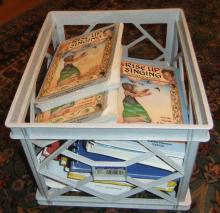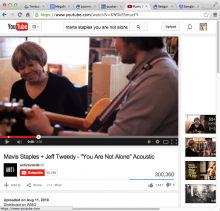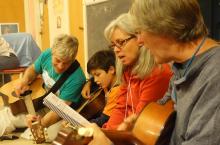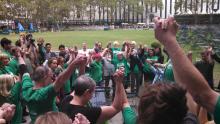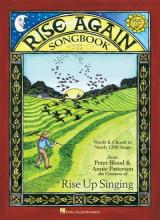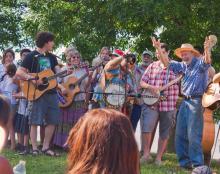Songs in the Public Domain
Songs in the public domain are indicated in Rise Again by a simple notice saying "Arr (c) 2015 Hal Leonard Corp." In Rise Up Singing there is no copyright notice under such songs. In this case you are welcome to record these songs or reprint the lyrics freely as you long as you do not simply copy the songs out of the book. The actual arrangement & layout of the songs in the public domain is owned by the songbook publisher.
It is difficult to prove that a song is in the public domain unless it was previously copyrighted and the copyright expired. As a rule of thumb, songs that were officially published more than a century ago (e.g. in the 19th century) are probably now in the public domain.
On the other hand, "traditional" songs are often copyrighted by the person who collected them (e.g. John or Alan Lomax) or by musicians recorded them or copyrighted their own adaptation of tradional lyrics. If you find the same song copyrighted by many different artists in an online song database, this usually means that the musical arrangement is copyrighted but the lyrics may not be.
This drove Pete Seeger nuts and he worked to try and establish a "Public Domain Foundation" that would return royalties for such songs to "the people" (in the form of financial support for organizations that were providing support for traditional musicians). It was a losing battle as both recording companies and songbook publishers have huge financial incentives to treat traditional songs as their own copyrighted material.
Furthermore, music companies spend a lot of money lobbying Congress to make it harder and harder for songs to go into public domain. When the copyright laws were first passed in the 18th century, copyrights only lasted less than a decade. Now they are being extended to many years after author's death. By comparison, drugs which cost a great deal to create lose their copyright protection in 18 years. This is because govenments have a large incentive to let drugs become generic but no incentive to let artistic creations become available freely to the general public.
Summary: If you can find a set of the lyrics in a very old publication then the lyrics are public domain. If you find a song recorded by many different artists without attribution to a different artist or if the lyrics appear in several books without any copyright notice besides a generic arrangement notice by the book's publisher, it is significant evidence that the song is in fact in the public domain.





